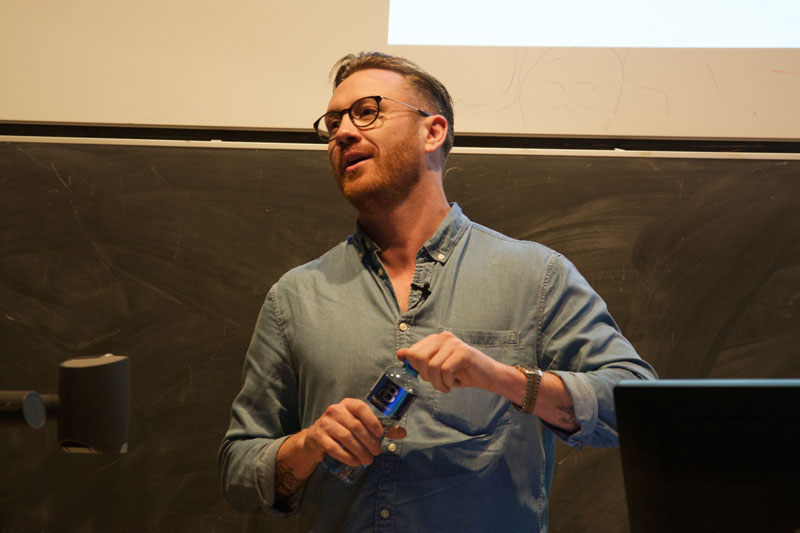
This evening, TCD Visual Arts Society (Vis Arts) had the privilege of hosting renowned street artist Maser who wittily delivered an intriguing talk which outlined the development of his career and gave insight into his unique artistic outlook and practice. Maser’s uniquely relaxed delivery was both engaging and fascinating, as his inherently likable nature ensured that the audience remained captivated throughout the hour-long presentation.
Maser’s recent projects have led him to become a household name, however, his road to achieving such success has been a long and colourful one, beginning at the age of just 15, when he started practicing graffiti. Maser explained how it began as more of a social thing but developed into an obsession as he went on to paint thousands of murals across Dublin. His motives were never malicious and purely spurred on by a passion for creating art, not vandalism. However, as he began to build more momentum, he got caught and had to abandon his passion for risk of a prison sentence.
The ban pushed him towards other means of expression, and he developed an interest in graphic design and typography, and he started painting famous quotes on walls around the city with permission, something with which he has now become associated with. Speaking about such a project he executed in Ballymun, he recalled how Dublin City Council tried to stop him from working, despite the fact he had been granted permission: “I literally had to tell Dublin City Council to fuck off”, describing how once the project was completed, the council “thought it was amazing” and wanted to work with him. This incident can be seen as a metaphor for his entire career, as his artwork essentially began as vandalism, which was condemned, but then became something that was highly coveted and also extremely valuable.
Beginning to feel unfulfilled with this type of work, Maser shifted towards a more pop art type style. He began to toy with the idea of visually interrupting urban landscapes, which began as an illusionistic endeavour but developed into something that he described as being a major turning point in his career. The canvas for this major breakthrough was unexpected, a disused petrol station in Limerick, which he transformed into a vibrant piece of art. From here, Maser became interested in making art that was immersive and which allowed people to fully interact with “creating spaces for escapism … like Disneyland!”.
His success in recent years has been considerable, receiving commissions for pieces worldwide. This artistic output has been extremely diverse, ranging from murals to music videos and shop windows to a series of immersive outdoor installations. His conception of art is one with a strong social aspect stating that “art is a tool for social change, the pretty picture is just the by-product”. He sees his art as being functional, transforming the mundane into something that people can use and enjoy. Examples such as his latest enhancement of a dull building on Tara St exemplify these aspirations, art that is not just for art’s sake, but one that serves a purpose.
Maser could be considered the Irish equivalent to Banksy, both mysterious yet simultaneously ubiquitous. His huge impact on the art world should have warranted a major crowd, but sadly the turnout was underwhelming, more likely the result of a lack of publication as opposed to a lack of interest. Luckily, the artist seemed unperturbed and went on to deliver a talk that captivated every member of the audience, in an event that should have been enjoyed by more.






